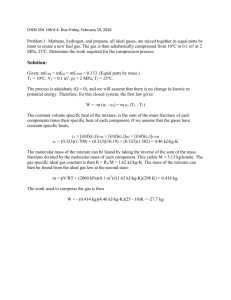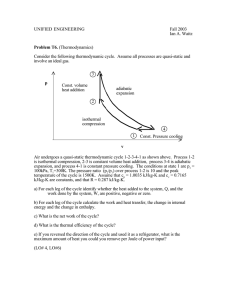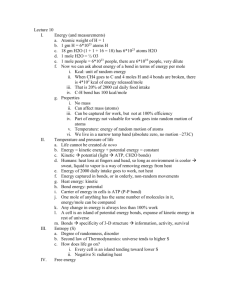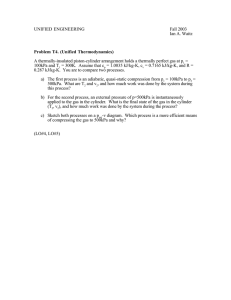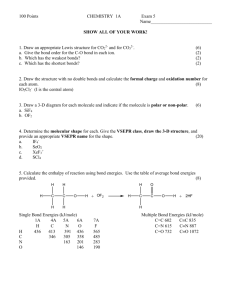Solution to HW #2
advertisement
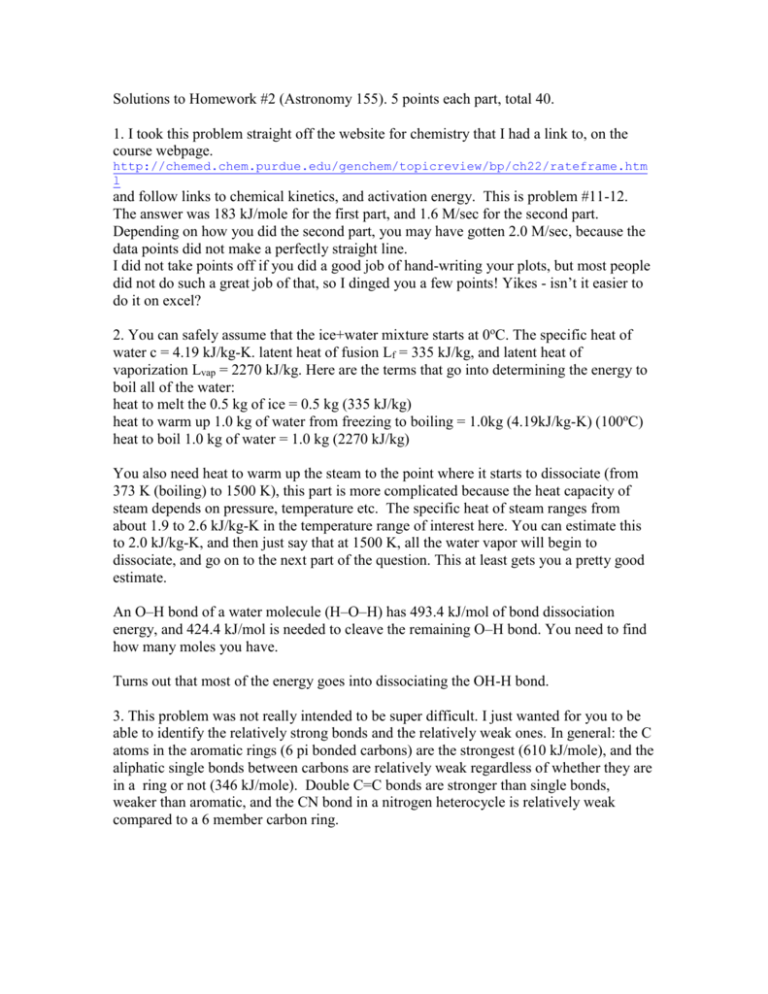
Solutions to Homework #2 (Astronomy 155). 5 points each part, total 40. 1. I took this problem straight off the website for chemistry that I had a link to, on the course webpage. http://chemed.chem.purdue.edu/genchem/topicreview/bp/ch22/rateframe.htm l and follow links to chemical kinetics, and activation energy. This is problem #11-12. The answer was 183 kJ/mole for the first part, and 1.6 M/sec for the second part. Depending on how you did the second part, you may have gotten 2.0 M/sec, because the data points did not make a perfectly straight line. I did not take points off if you did a good job of hand-writing your plots, but most people did not do such a great job of that, so I dinged you a few points! Yikes - isn’t it easier to do it on excel? 2. You can safely assume that the ice+water mixture starts at 0oC. The specific heat of water c = 4.19 kJ/kg-K. latent heat of fusion Lf = 335 kJ/kg, and latent heat of vaporization Lvap = 2270 kJ/kg. Here are the terms that go into determining the energy to boil all of the water: heat to melt the 0.5 kg of ice = 0.5 kg (335 kJ/kg) heat to warm up 1.0 kg of water from freezing to boiling = 1.0kg (4.19kJ/kg-K) (100oC) heat to boil 1.0 kg of water = 1.0 kg (2270 kJ/kg) You also need heat to warm up the steam to the point where it starts to dissociate (from 373 K (boiling) to 1500 K), this part is more complicated because the heat capacity of steam depends on pressure, temperature etc. The specific heat of steam ranges from about 1.9 to 2.6 kJ/kg-K in the temperature range of interest here. You can estimate this to 2.0 kJ/kg-K, and then just say that at 1500 K, all the water vapor will begin to dissociate, and go on to the next part of the question. This at least gets you a pretty good estimate. An O–H bond of a water molecule (H–O–H) has 493.4 kJ/mol of bond dissociation energy, and 424.4 kJ/mol is needed to cleave the remaining O–H bond. You need to find how many moles you have. Turns out that most of the energy goes into dissociating the OH-H bond. 3. This problem was not really intended to be super difficult. I just wanted for you to be able to identify the relatively strong bonds and the relatively weak ones. In general: the C atoms in the aromatic rings (6 pi bonded carbons) are the strongest (610 kJ/mole), and the aliphatic single bonds between carbons are relatively weak regardless of whether they are in a ring or not (346 kJ/mole). Double C=C bonds are stronger than single bonds, weaker than aromatic, and the CN bond in a nitrogen heterocycle is relatively weak compared to a 6 member carbon ring.
